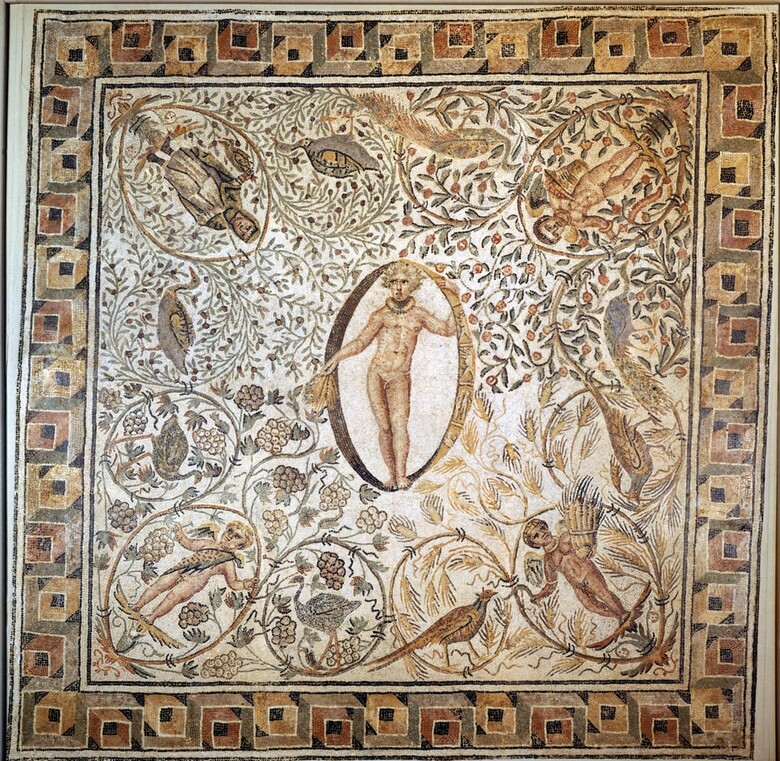
Mosaic of the Four Seasons
This original floor mosaic was discovered in Haidra, Tunisia, in the winter of 1939 – 1940. It is believed to have been made about 238 CE. or early that century. About 150 years earlier, Pompeii’s Mount Vesuvius erupted in 79 CE. where there are many similar mosaics, yet perhaps not as well preserved.
This wall-mounted mosaic depicts the cycle of the year and conveys happiness, prosperity, and optimism. The composition is an example of the Roman practice of personifying nature. At the center is a nude adolescent who represents the spirit of the year and the four corner figures correspond to the four seasons: Spring with roses, Summer with wheat, Autumn with a vineyard, Winter with olives. The plants help delineate the ovals and the birds, such as peacocks, pheasants, herons, ducks, and geese, frame the perimeter medallions. The design is characteristic of the romantic ‘Romana Africa’ style, which came to its peak as early as the 3rd century.
The gift was presented by the President of Tunisia, Habib Bourguiba (1903 – 2000), to the United Nations and Secretary-General Dag Hammarskjold (1905 – 1961) accepted it on 12 May 1961.

